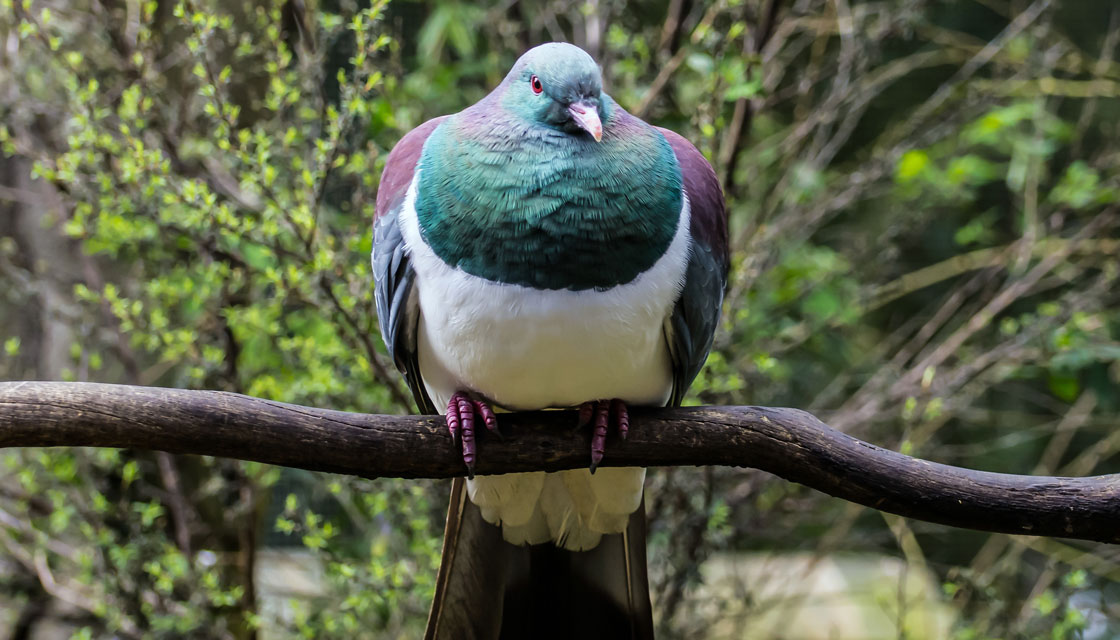I hear it before I see it. The rapid beating of wings cutting their way through the air, skirting the tops of the TÅtara trees as the bird approaches. The wood pigeon’s power and pace make me look up. It flies low, only meters above my head. I watch from underneath, wings outstretched, tail fan-like with its white belly driving itself forward. It’s a tactical flyer, capable of traveling good distances. Though all too often, its appetite determines the length, making the majority of its flights short ones. The KererÅ« with green, purple and white plumage. A bird that always looks dressed, ready for any occasion.
It’s the shape of its body that I love. Plump. Fat. Bigger still when its head is tucked down, turtle-like forcing its belly out like a little Buddha. Branches snap upon landing. The birds’ weight too much for limbs that have grown brittle through summer. Red eyes dart from one side to other, head twitching with its movements. Collecting the yellow Taraire berries it prizes from the fronds of branches, swallowing them whole. Gorging on guava berries makes the wood pigeon drunk. Still, it flies on, lower now. It finds juicy red plums and plucks at them, puncturing the skins with a sharp beak. That occasion I mentioned earlier, has to be dinner. All those swallowed berries seem like a good marinade.
The MaÅri would eat the KererÅ« back when most of today’s native birds were abundant. Nothing like they are now. They’d knock them out of the sky with their spears, with rods when they landed, or they’d trap them when they drank from water troughs they placed in trees. If they were to be eaten straight away, they’d cook them in a HÄngÄ« beneath the ground. If they were stored, they were roasted over a spit and preserved in their own fat. They were a source of protein, of sustenance. Their feathers were used to make cloaks or were placed in their hair. I bet they tasted good.Â
I hold a slingshot in my hand. Something simple that I carved from a fallen branch of a KÅwhai tree. Stripped of its bark, polished. A thick industrial rubber band stretched between two bent nails at the top of each point of the -˜Y.’ My plum trees revenge. One of its dried seeds is balanced carefully in the center. I test it. The empty L&P can I have positioned on top of my balcony’s ledge remains defiant, solid with nothing but the dents from my fingers that placed it there.
I practice. The can is now dented beyond recognition. I &I it reads having folded back the parts that made them different letters. I’m ready, in position. The beating of wings, the rush of wind, stronger than before. It’s a big one. It lands on the gutter directly above my head. No need for a slingshot, I can almost reach out and grab its tail feathers. The KererÅ« looks directly at me, red eyes moving its head from side to side, assessing me. And I wonder about trust, of belief in one another. Of our human instinct, wanting to take something simple and change it. Our need to kill other things, to taste and dominate them. The MaÅri used the bird, the Europeans of the time killed it for sport. The fact that we create laws to stop us from doing just that. It’s a beautiful thing and I know I won’t do it. I put down my slingshot and turn to walk inside, though not before it shits on my head.
